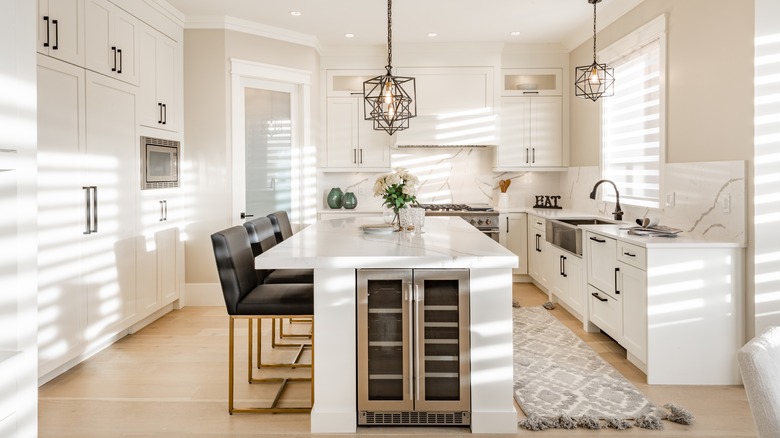Should You Match Your Kitchen Countertops With Your Flooring?
When remodeling a kitchen, two of the most important decisions you'll make will be about which type of countertops and flooring to install. While the two may seem like separate components, selecting materials that complement each other can make your kitchen look more cohesive and stylish. Floor Factors says that when it comes to matching these two elements, there are no hard and fast rules. The main benefit of matching is that it creates a consistent look throughout the kitchen. It can also be beneficial in increasing the illusion of space.
On the other hand, mixing up materials can add character and depth. Combining different colors, textures, and patterns makes for an interesting look that really stands out from traditional kitchen designs. It also gives you more freedom when it comes to selecting materials that match your style preferences or existing décor. Plus, if you ever decide to switch up your kitchen design in the future, having mismatched elements makes it easier to change out one of them without undertaking an entire renovation project.
The key is finding materials that work together harmoniously while bringing out the best features in each other's design. Choosing the right kitchen materials and finishes can be a daunting task since there are so many options to consider. This article will cover advice and tips on how to pick the perfect combination for your countertops and flooring.
Coordinating colors
Flooring and countertops are prominent features when it comes to kitchen design, so you want to make sure the color you choose for each one complements the other. To accomplish this, consider keeping them within a similar color palette. One of the easiest ways to make sure that your kitchen finishes coordinate perfectly is by matching them in tone. Pick colors within the same family, such as warm neutrals or cool tones. This will create a balanced look and allow each element of your kitchen space to stand out on its own without competing with one another.
When selecting kitchen countertops, think about what kind of look you want to achieve. Are you going for sleek and modern, or do you prefer something more traditional? Granite is a great choice if you're leaning towards contemporary, while marble or quartz countertops offer a classic look. In terms of color, do you want lighter or darker tones? Lighter shades will give your kitchen a bright, airy feel, while darker shades will add depth and drama. When choosing between materials and colors, make sure that whatever option you pick will tie into the overall look of your kitchen. Kitchen Infinity suggests that a lower contrast between colors provides a more traditional look, while higher contrast leans more modern.
Pattern considerations
Along with color, pattern is also an important factor when selecting materials for your kitchen countertops and flooring. According to Marble.com, natural stone countertops such as granite or marble come in various patterns that can be simple or detailed. To achieve visual balance in your space, opt for patterned tile flooring such as ceramic or porcelain with subtle patterns or lines that echo the texture of your chosen countertop material.
You don't have to stick to only one type of material when it comes to choosing finishes. Mixing textures like wood, ceramic tile, stone, or granite can really help bring out the character of both surfaces and still keep a uniform color palette throughout the room. That said, if you do decide to utilize multiple materials for either surface make sure they are not too different from one another in terms of their pattern.
Take some time to think about what kind of look you want to achieve before deciding on which materials work best together. From natural stone countertops paired with wood floors, to tile or laminate floors matched with marble or quartz counters, there are endless possibilities when it comes to finding complementary materials for your dream kitchen.


